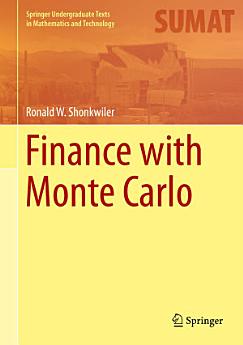Finance with Monte Carlo
Despre această carte electronică
The Monte Carlo method is introduced early and it is used in conjunction with the geometric Brownian motion model (GBM) to illustrate and analyze the topics covered in the remainder of the text. Placing focus on Monte Carlo methods allows for students to travel a short road from theory to practical applications.
Coverage includes investment science, mean-variance portfolio theory, option pricing principles, exotic options, option trading strategies, jump diffusion and exponential Lévy alternative models, and the Kelly criterion for maximizing investment growth.
Novel features:
- inclusion of both portfolio theory and contingent claim analysis in a single text
- pricing methodology for exotic options
- expectation analysis of option trading strategies
- pricing models that transcend the Black–Scholes framework
- optimizing investment allocations
- concepts thoroughly explored through numerous simulation exercises
- numerous worked examples and illustrations
Also by the author: (with F. Mendivil) Explorations in Monte Carlo, ©2009, ISBN: 978-0-387-87836-2; (with J. Herod) Mathematical Biology: An Introduction with Maple and Matlab, Second edition, ©2009, ISBN: 978-0-387-70983-3.
Despre autor
Ronald W. Shonkwiler is a Professor Emeritus in the School of Mathematics at the Georgia Institute of Technology. He received his Masters in Mathematics in 1967, and then his PH.D. in Mathematics in 1970 from the University of Colorado, Boulder. His research includes optimization by Monte Carlo methods, computer geometry, fractal geometry, mathematical epidemiology, neural networks, and mathematical finance. Ronald W. Shonkwiler previously published two books with Springer in the UTM series. "Explorations in Monte Carlo Methods" 2009, ISBN: 978-0-387-87836-2 and "Mathematical Biology, 2nd ed" 2009, ISBN: 978-0-387-70983-3.





